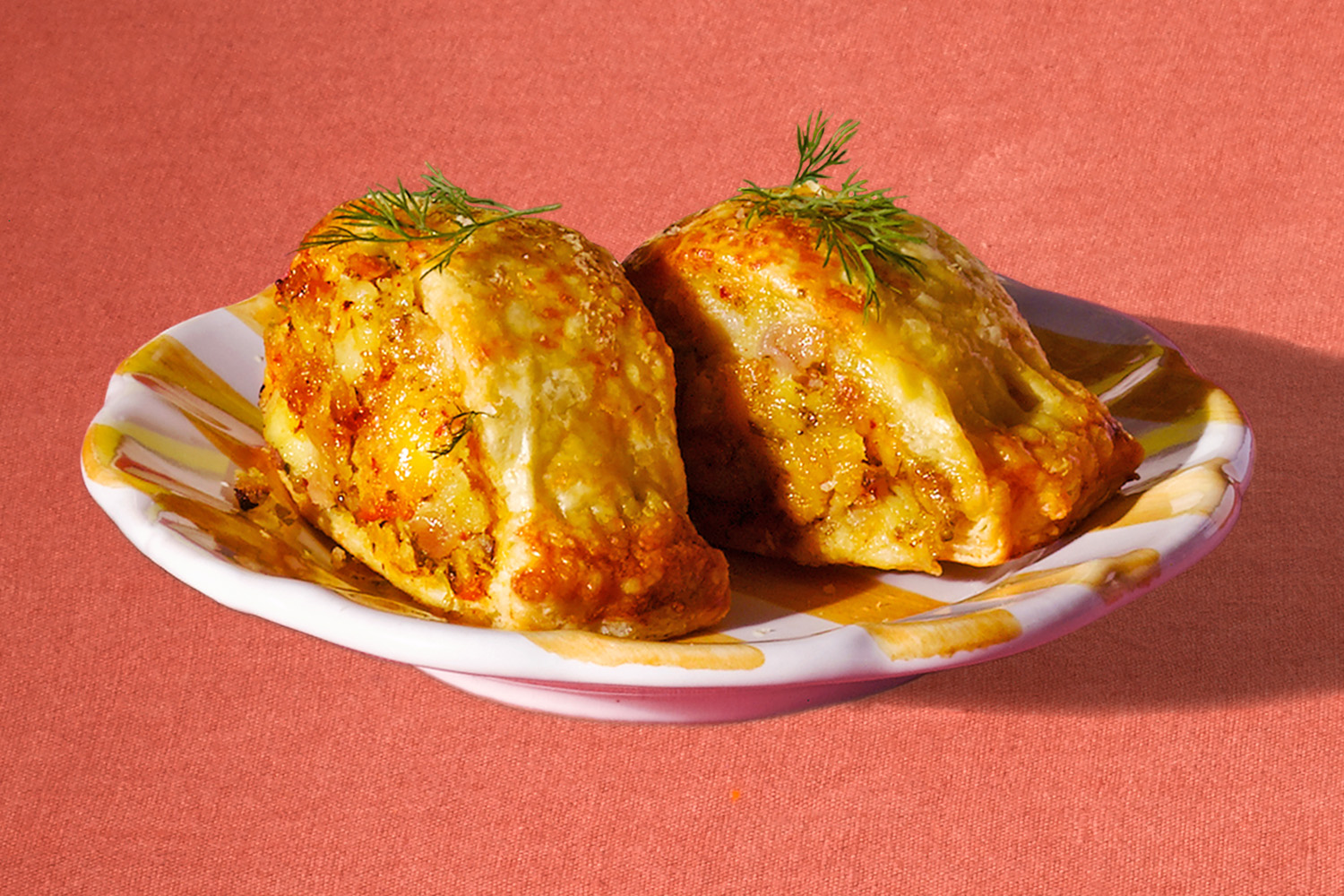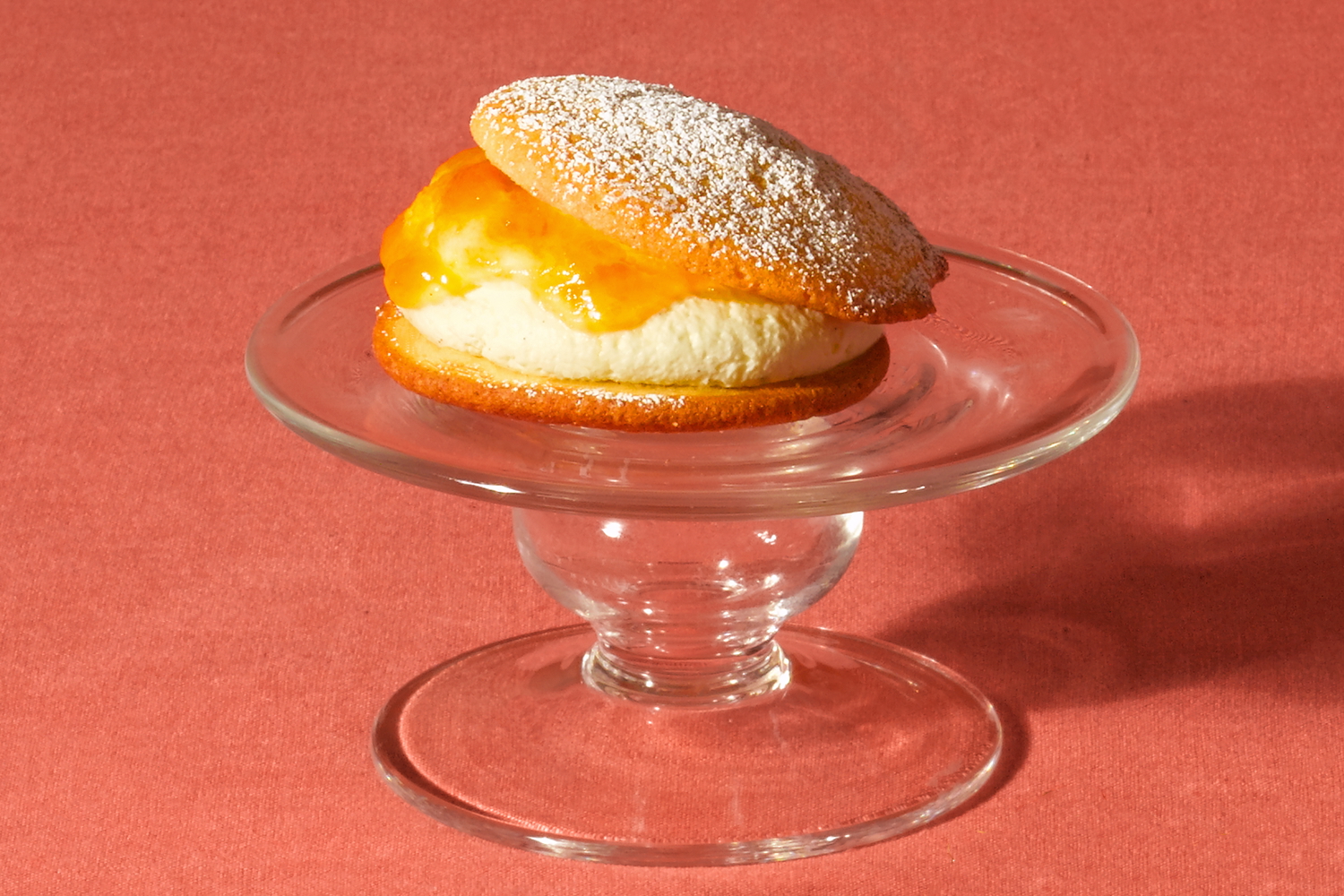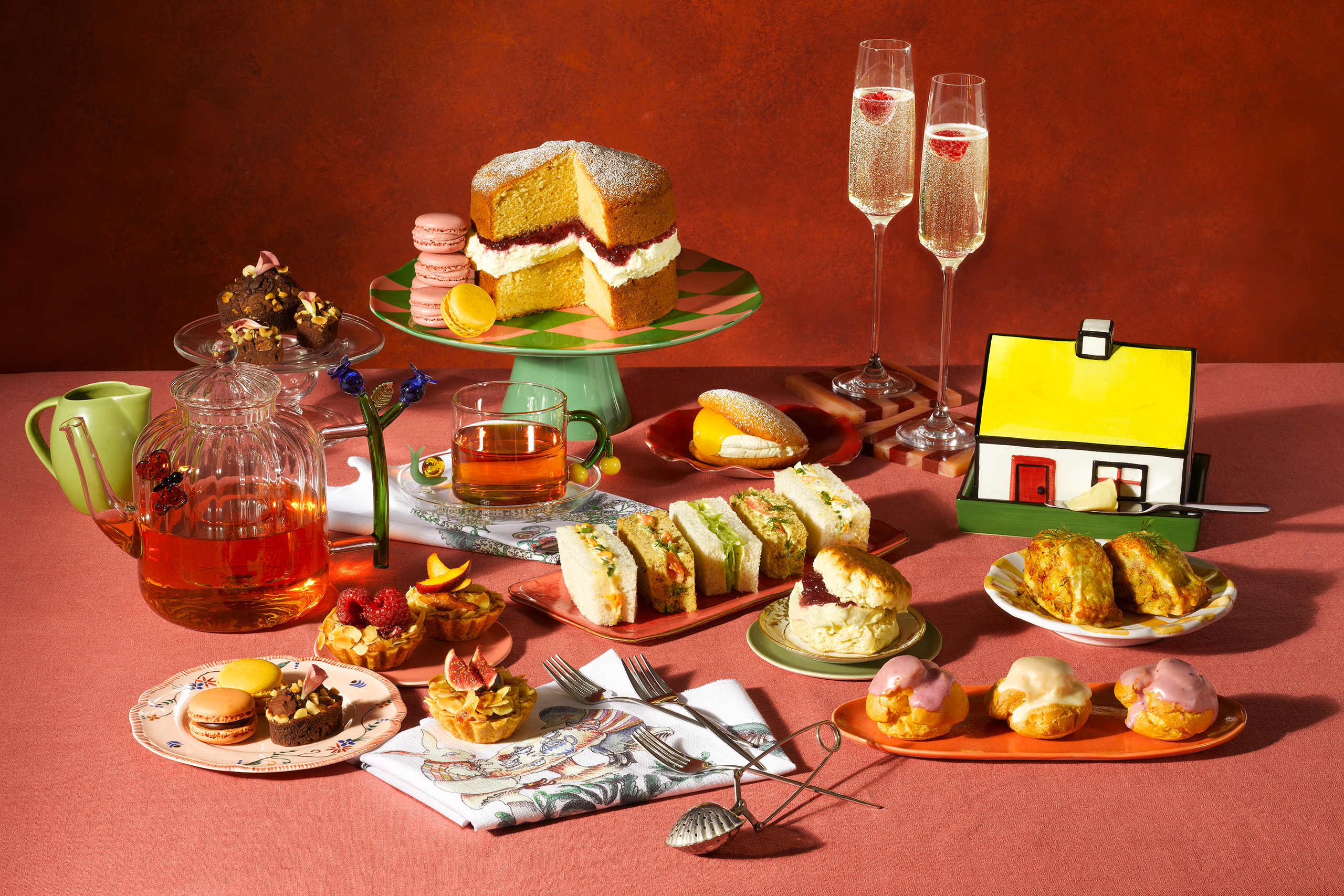Photograph Patrice de Villiers
Prop styling Victoria Eldridge at Style Department
Food styling Tarunima Sinha
In 1935, Britain’s obsession with taking a daily tea break at 4pm was immortalised in the hit song Everything Stops for Tea. Somehow, 90-odd years later, the importance of an afternoon break for cake, sandwiches and a pot of English breakfast not only endures but it has evolved.
If you thought this treat was just for Mother’s Day, then a recent survey of 2,000 people born after 1997 proves you wrong. The research found that gen Z and millennials love a spot of tea. One in three reported they had been to a tea party in the past year. It’s still a relatively cheap celebration meal, and now more and more venues serve it up. This year alone, the Science Museum, the House of Lords and Theatre Royal Drury Lane all launched their own takes on afternoon tea.
Matthew Ryle, the executive chef at the London brasserie Maison François and its sister Cafe François, added afternoon tea to both menus this summer.
“It was way busier than I thought it would be – about 700 afternoon teas in August,” says Ryle. “And the guests weren’t the classic afternoon-tea suspects, but a real mixed bunch. A lot of bookings were from the staff at local art galleries who held afternoon meetings over tea.”
The menu has also diversified. Macarons are increasingly served with or instead of scones, and filled brioche rolls rival finger sandwiches. Unsurprisingly, matcha tea features high on the list of updates, fusing Asian and British tradition. These new treats are not only more appealing to taste buds raised on sushi, viennoisserie and patisserie, but they’re also a visual feast; bright colours and symmetric shapes that will get more likes on Instagram than an egg and cress sandwich.
The origin myth that afternoon tea was invented by the Duchess of Bedford in the 1840s is disputed by food historians, but no one can deny its mainstream popularity in the early to mid 1900s. It took off with the rise of car tourism among a new audience of daytrippers to the countryside or coast, working as a special occasion meal that was cheaper than lunch or dinner. It was also a dream for hotel and restaurant kitchens to prepare: a pre-ordered set meal sold over two sittings at a time when the dining room would otherwise be empty.
New generations are also taking tea at home, with Pinterest searches for “afternoon tea party ideas” up 165% this year. No surprise given the keen interest in “tablescaping”: elaborate place settings, fancy linen and ornate centrepieces are a good backdrop for a tea party. A rising number of tableware designers are creating their own take on tea sets for a new audience.
The Dutch interiors brand &Klevering has made a real name for its butter dishes and teapots, and its designer, Gerbrand van Nijendaal, says, “In a world that feels rushed and digital, people are rediscovering the joy of gathering around a beautifully set table. Creativity is highly valued these days – not just in recipes, but also in making the table look beautiful.”
How you get your tea is also changing: brands such as Fortnum & Mason, Marks & Spencer and Bettys have all introduced hampers or letterbox afternoon teas in the past year, and hosts are also making their own delicacies. The simple pleasure of the tea is universal, though.
As Ryle says: “It’s a treat or a celebration and it makes the room feel good. At Christmas-time the restaurant is buzzing all day, and afternoon tea brings the same Christmas energy.”
All these decades after its invention, this simple idea is still evolving. As the song lyrics have it, everything stops for tea – but the ritual itself? That seems unstoppable.
How to choose the perfect brew

Hayley Myers
Mix and match
Think of tea like you would wine. “An oolong or an elegant darjeeling are both adaptable and make great dancing partners with sandwiches,” says Henrietta Lovell, founder of the Rare Tea Company. For the sweet tiers, English breakfast is the way to go. “Real power is needed to balance the sugar, so you want a strong, black tea.”
Acid test
Tannins – the natural compound that gives tea its bitter taste – can make your mouth feel dry, but minor changes to the food offering can minimise that. Take the cucumber sandwich. “Remove the seeds and use butter instead of cream cheese,” Lovell recommends. “It will reduce the acidity and make the flavours soft and silky.”
Having a bubble
Fizz is fine with savoury, but ask yourself: does it complement cake? “It doesn’t,” says Lovell. “Ask any sommelier.” Instead, try a tea-based cocktail – where tea has been used as a lengthener, or as an infusion. The Ritz has a fig leaf cocktail with white tea and peony (above), and the Dorchester uses rooibos in its fruity black pearl.
Go green
Herbal tea might seem an anomaly in a traditional British tea room, but it is growing in popularity. “Lemon herbs, like verbena and lemongrass, aren’t acidic and can be delicious with bakes,” says Lovell. Renowned Yorkshire tea room Bettys offers a lemongrass and ginger tisane – and you can buy it to take home with you.
Infusion confusion
Does leaving the tea to steep for longer give you a stronger brew? Lovell says not. “Loose-leaf tea should be decanted at its peak infusion, which, depending on the type, is around 90 seconds. If you like it stronger, use more tea leaves to begin with – but allow it to infuse for the same amount of time.”
Tarunima Sinha’s afternoon tea recipes
Potato and cheese puffs

The best afternoon teas start with something savoury.
makes 6-8
butter 30g
onions 2 medium, peeled and finely diced
turmeric powder ½ tbsp
fresh ginger 20g, grated
salt 1 tsp
chilli flakes 1 tsp (optional)
potatoes 250g, boiled, peeled and coarsely mashed
paneer cheese 100g, coarsely grated
cheddar cheese 100g, coarsely grated
coriander leaves 30g, chopped
garam masala powder 1 tsp
ready rolled all-butter puff pastry 1 sheet
milk 4 tbsp
parmesan cheese 50g
sesame seeds to sprinkle (optional)
In a wide frying pan, add the butter and onions. Cook it on a low heat until the onions are soft and translucent. You don’t need to brown them for this recipe.
Add the turmeric, grated ginger, salt and chilli flakes, if using, and stir. Switch off the heat and let it cool.
In another bowl, add the mashed potatoes, grated paneer, grated cheddar, chopped coriander and garam masala powder. Add the cooled onion and spice mixture. Give it all a stir. Taste to adjust seasoning, and leave to cool.
Roll out the puff pastry sheet on a board.
Spoon the cooled potato and cheese filling on to the middle of the pastry sheet. Bring the two long ends together and pinch to join. Roll into a tight log shape and chill for 20 minutes.
Take the prepared pastry out of the fridge and turn it upside down so the sealed edges are on the base.
Brush the top with the milk. Sprinkle over sesame seeds, if using, and grate over the parmesan cheese using a microplane grater. Chill the prepared pastry again in the fridge for an hour, or freeze for 20 minutes.
Preheat the oven to 190C fan/gas mark 5.
Line a baking sheet with parchment paper. Remove the pastry from the fridge or freezer and cut into 6 to 8 equal portions. Place on the lined baking sheet.
Bake for 18-20 minutes or until light golden and the base is crisp. Serve warm.
Victoria sponge
Makes 1 small cake, enough for afternoon tea with other treats
plain flour 200g
baking powder 1½ tsp
fine sea salt ½ tsp
medium eggs 4
unsalted butter 200g
golden caster sugar 200g
vanilla bean paste 1 tsp
soured cream 3 tbsp
For the filling
double cream 250ml
icing sugar 25g, plus 1 tbsp for dusting
vanilla bean paste 1 tsp
quality raspberry jam 5 tbsp
Butter and flour 2 x 15cm round cake tins. Line the base with a disc of baking paper. Preheat the oven to 170C fan/gas mark 5.
Sift the flour, baking powder and salt into a large bowl.
Break the eggs into a small jug and stir until they are just mixed.
Put the butter, sugar and vanilla into the bowl of a stand mixer with the beater attachment (or use hand-held beaters and a large bowl). Cream until the mixture is pale and fluffy. Gradually add the eggs, in 3 or 4 additions, beating well after each.
Sift in the flour mixture in 3 or 4 additions, gently folding it in. Add the soured cream and fold it in gently. Do not overmix the batter.
Divide the batter equally in the 2 prepared tins. Tap both tins on the worktop gently, to release any air pockets.
Bake for 25-30 minutes until a skewer comes out clean and the cake is springy to the touch.
Cool the cake for 10 minutes in the tin, then turn out on to a wire rack and let it cool completely.
When ready to serve, whip the double cream to medium-soft peaks. Add the icing sugar and vanilla bean paste. Fold in gently.
Place one of the sponges on a cake plate or cake stand. Dollop spoonfuls of the whipped cream. Add the raspberry jam on top of the cream, leaving a 2cm rim around the edge.
Place the second sponge carefully on top. Dust with 1 tablespoon of icing sugar.
Sponge drops
Dare we say it, but we think these are superior to scones – and we find them easier to make at home.

You can use the same batter as the sponge cake (above) to make quick and easy sponge drops, sandwiched with whipped cream and your favourite fruit jam or curd.
Line 2 baking trays with baking paper and preheat the oven to 170C fan/gas mark 5.
Place 1 tablespoon of batter on each of the lined trays. Keeping 3-4 cm apart, place another 5 drops of the batter on each tray so there are a total of 6 drops on each tray.
Bake in the oven for 12-14 minutes, until it is lightly golden and cooked all the way through. The texture should be almost like a soft cake that resembles a biscuit.
Leave to cool completely on the trays.
When ready to serve, add a generous tablespoon of the whipped cream, followed by a teaspoon of the jam. Place another sponge drop on top and dust it with icing sugar.
Tip If you have any leftover batter, make more sponge drops in equal numbers so you can sandwich them. Make sure the trays have cooled down otherwise the batter will spread. If by any chance the sponge drops have merged, you can use a 7.5cm cookie cutter or a glass and stamp out round shapes, once baked.
